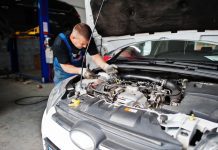Your car’s brakes are a crucial safety component, so the more you know about them, the better. This knowledge will be useful when it’s time for maintenance and troubleshooting because it will enable you to communicate your issues to a mechanic as well as recognize the symptoms of problems.
This kind of information also helps you avoid paying for labor or parts that are not necessary for your automobile to stop safely and effectively.
To give you more confidence the next time you have to have your automobile serviced, we will go through the many kinds of vehicle brakes and vehicle braking systems in this piece, including trailer brakes.
Types of vehicle braking systems
The majority of brakes work by applying friction to both sides of the wheel, which together transforms the moving object’s kinetic energy into heat. For instance, when braking is regenerative, a large portion of the energy converts to electrical energy, which can then store.
The brake disc, blade, or rail of an eddy current brake uses magnetic fields to convert kinetic energy into electrical current, which then transforms into heat.
The most prevalent types of braking systems in contemporary automobiles are listed below. Knowing which ones fit your car will make service and troubleshooting simpler.
Disc brakes
Nowadays, disc brakes are the most widely used automotive component. It starts with a rotor, which is the large silver disc attached to the wheel hub and which also serves to support the tire and revolve with the wheel.
The third component of the system, the pads are held in place by the caliper, which is the large silver clamp on the side of the rotor. There are pads on either side of the rotor.
However, disc brakes are not without flaws. The calipers can jam, the rotors are prone to warping or rusting, and they can occasionally be annoyingly noisy.
Drum brakes
Older vehicle models frequently include drum brakes. When the brake pedal is squeezed, the shoes or crescent-shaped pads push outward to halt the rotating drum or the silver casing, which slows and stops the automobile, unlike disc brakes, which have the entire unit affixed to the wheels.
Compared to disc brakes, drum brakes are less expensive and require less upkeep. Additionally, for improved performance, you can utilize them in conjunction with front-wheel disc brakes.
Using discs in addition to drums will improve performance because drums heat up more quickly and make stopping harder for cars. Hard stops become less effective due to the brakes fading as a result of this.
Emergency brakes
The service (drum or disc) brake systems are not the same as emergency brakes, sometimes known as parking brakes. Emergency brakes come in a variety of styles. It can be a pedal, a button, or a stick, as depicted.
The mechanism employs cable to engage either the front or back brakes when the emergency activates. If the brakes fail or the vehicle shifts out of gear, it can employ a backup device to prevent rolling.
Also, it will be simpler for you to later shift out of the park and into drive if you activate the emergency brake before releasing the parking brake. The drawback of this type of vehicle braking system is that the brakes remain engaged if you neglect to release them.
Systems of mechanical braking
Older cars often have mechanical brakes, but although being easier and less expensive than other systems, they are rarely employed today due to their poor performance.
When the brake pedal is depressed, the car is stopped by applying force to the drums or discs using several mechanical components, including springs and fulcrums. They are more effective when used as parking/emergency brakes than as service brakes.
Servo braking system
Vacuum braking is another name for a servo braking system. A big, hollow shell with a rubber diaphragm within makes up the system. The master cylinder engages the brakes when the brake pedal depresses. An air valve opens, filling one side of the chamber with air.
The diaphragm then flexes toward the vacuum side of the chamber. The vacuum component of the servo system enhances the braking force when compared to systems without it. However, the brake pedal won’t function properly if the air valves or the diaphragm don’t engage.
Hydraulic braking system
In contrast to earlier vehicle braking systems, the master cylinder in this one employs hydraulic fluid to transfer the force from the brake pedal to the calipers or drum shoes. This technology has fewer parts than the mechanical brake system, accelerates braking, and reduces the likelihood of braking failure.
Unfortunately, leaks in a hydraulic system are exceedingly difficult to eliminate, because leaks prevent the system from functioning. Additionally, significant injuries or fires could result from hydraulic line breaks.












